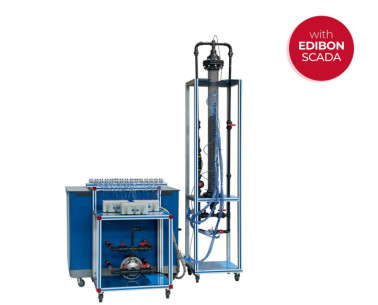In a world where climate change represents one of the greatest threats to our future, carbon dioxide (CO2) adsorption has become an urgent priority. The increasing concentration of CO2 in the atmosphere, primarily driven by human activities such as fossil fuel combustion and deforestation, has...
At EDIBON, we are committed to strengthening skills as a strategic pillar for the competitiveness and social well-being of the European Union. Proper training not only boosts the economy but also enables individuals to fully participate in society and democracy.
직접 공기 포집 (DAC)은 액체 용매 또는 고체 흡수제와의 화학 반응을 사용하여 공기 중의 CO₂를 직접 제거하는 혁신적인 기술입니다. 높은 비용과 에너지 소비와 같은 도전 과제가 있지만, DAC는 대기 중 CO₂ 농도를 줄이고 기후 변화를 완화하는 잠재적 해결책을 제공합니다. DAC의 연구 및 개발을 지속하는 것은 그 실행 가능성과 효과를 개선하는 데 중요합니다.
폐수 처리 시설
식수 처리 시설이 안전한 식수 제공에 중점을 두는 반면, 폐수 처리 시설은 사용된 물을 다시 환경에 방출하기 전에 처리합니다.
이러한 시설은 수자원 보호와 공중 보건에 중요한 역할을 합니다.
고급 처리 기술은 오염 물질을 제거하고 처리된 물이 환경 기준을 충족하도록 보장합니다.
 쿠키 기본 설정
쿠키 기본 설정


















